Sedgwick Ordered to Attack, night of May 2 into May 3
Introduction
Text-to-speech Audio
Images
Major General John Newton (commanding Third Division, VI Corps)
.jpg)
Brigadier General Albion P. Howe (commanding Second Division, VI Corps)
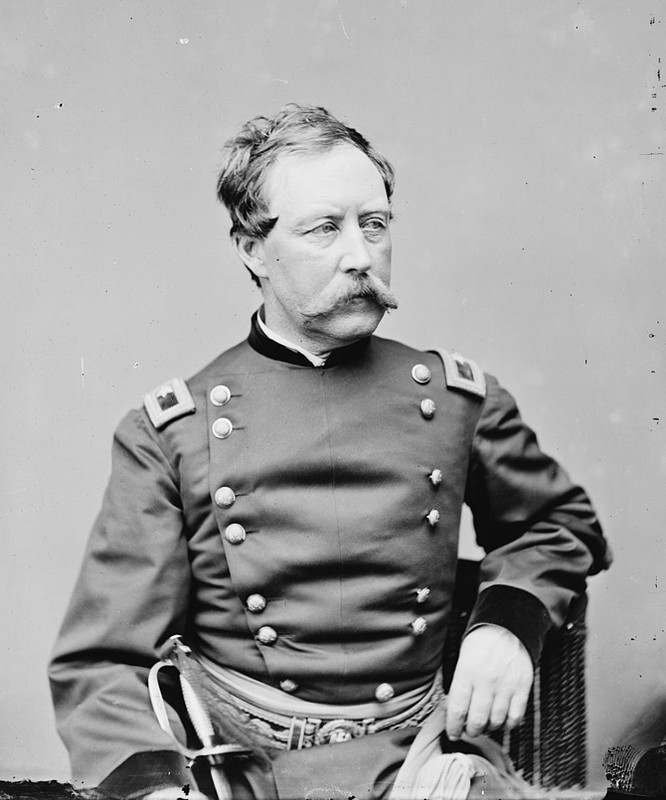
Brigadier General William T. H. Brooks (commanding First Division, VI Corps)
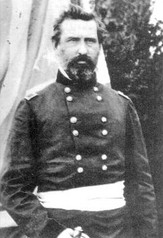
Overnight into May 3, Sedgwick moved his three divisions north towards Fredericksburg (map by Kathleen Thompson)
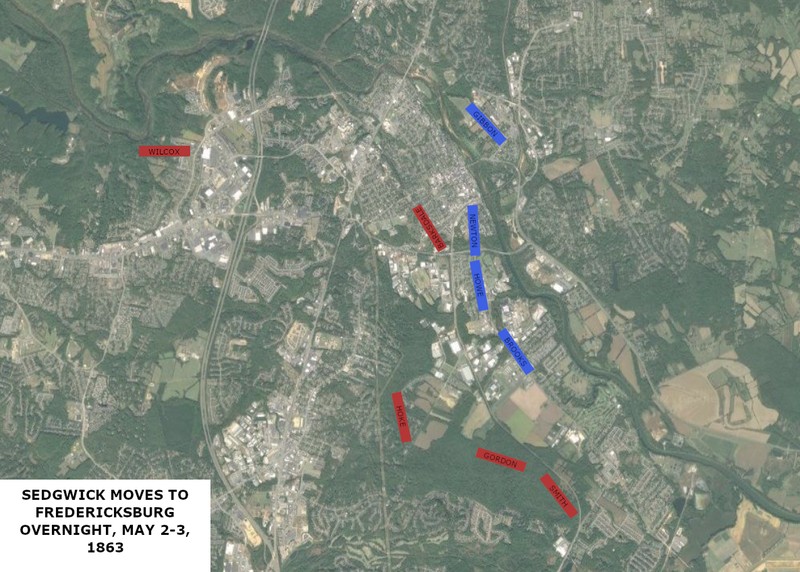
Report of Brig. Gen. William T. H. Brooks, 1st Division, VI Corps, page 1
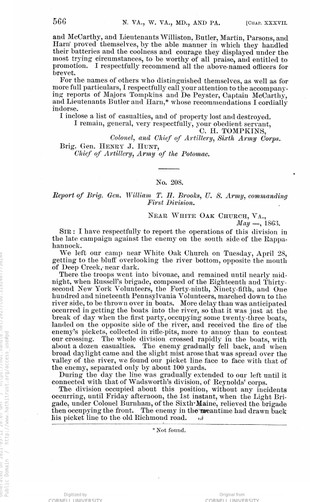
Report of Brig. Gen. William T. H. Brooks, 1st Division, VI Corps, page 2
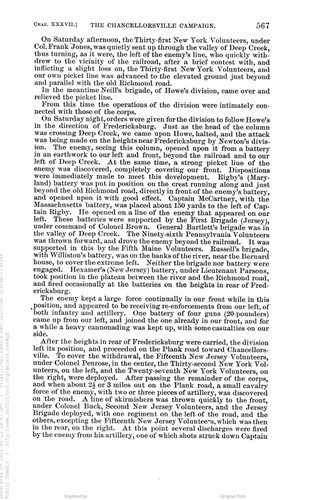
Report of Brig. Gen. William T. H. Brooks, 1st Division, VI Corps, page 3
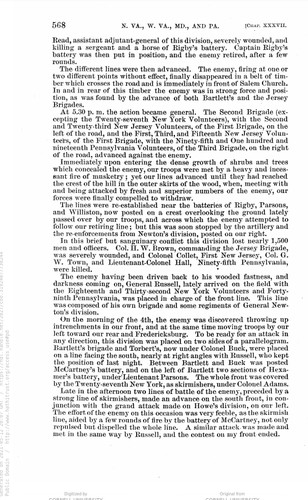
Report of Brig. Gen. William T. H. Brooks, 1st Division, VI Corps, page 4
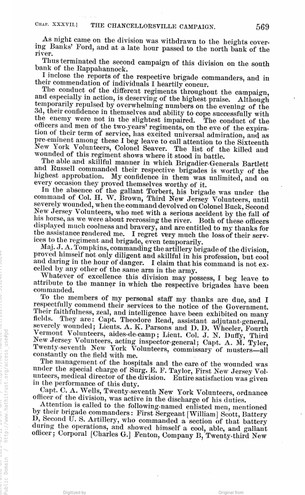
Report of Brig. Gen. William T. H. Brooks, 1st Division, VI Corps, page 5
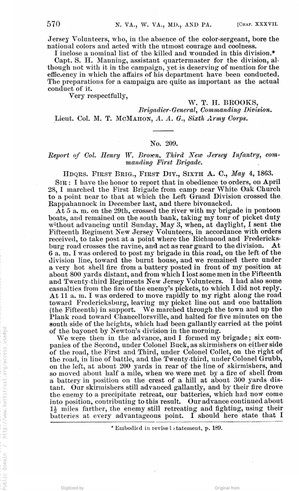
Report of Brig. Gen. Albion P. Howe, 2nd Division, VI Corps, page 1
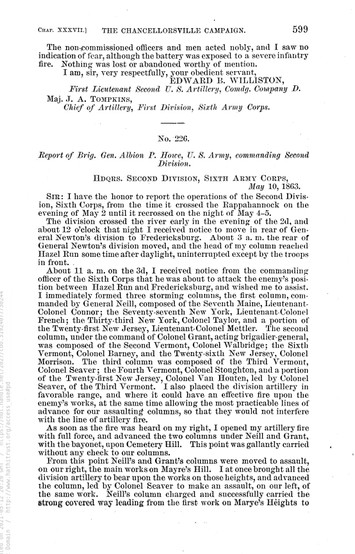
Report of Brig. Gen. Albion P. Howe, 2nd Division, VI Corps, page 2
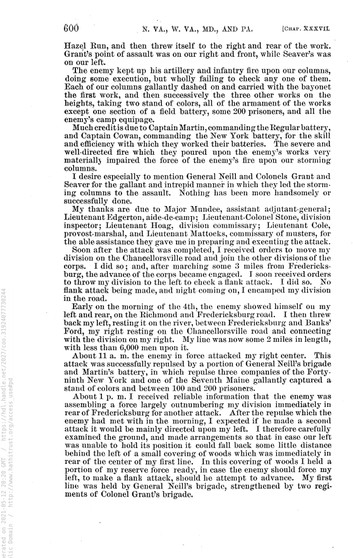
Report of Brig. Gen. Albion P. Howe, 2nd Division, VI Corps, page 3
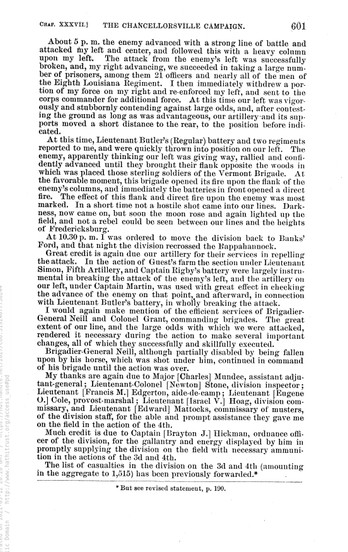
Report of Brig. Gen. Albion P. Howe, 2nd Division, VI Corps, page 4
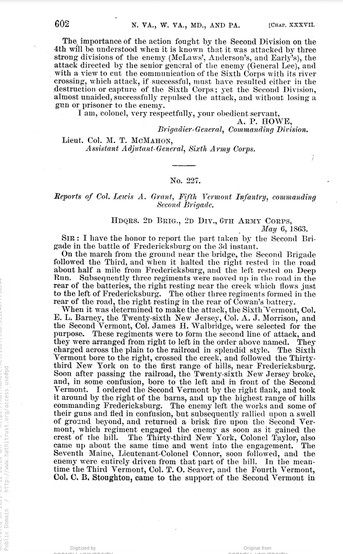
Backstory and Context
Text-to-speech Audio
Around 6:30pm on May 2, General Sedgwick received orders from Hooker to cross the Rappahannock, take Fredericksburg, and pursue the Confederates. Written prior to Jackson’s Flank Attack destroying Hooker’s right flank, Hooker still believed that the Confederate movements he had witnessed across his front all day were signs that Lee was retreating south. Believing that victory was at hand and wanting to press Lee’s army in retreat, this set of orders to Sedgwick intended the VI Corps to join the pursuit. Another set of orders followed telling Sedgwick to pursue an enemy retreating down the Bowling Green Road, which did not match with what the VI Corps was seeing in front of them.
While Sedgwick’s orders up to this point had left the final decision making up to him, now Hooker was ordering him to attack Fredericksburg. Sedgwick tentatively put skirmishers forward from his First and Third Divisions. Engaging with the Confederate skirmishers and claiming a portion of the Bowling Green Road, darkness fell and Sedgwick determined not to engage in a full attack during the night. Hooker, now dealing with the aftermath of Jackson’s attack on the XI Corps, pressed Sedgwick to attack but did not alert him to the full situation of the army at Chancellorsville.
Late in the evening of May 2 Sedgwick received another set of orders from Hooker: “The Major-General commanding directs that General Sedgwick crosses the Rappahannock at Fredericksburg on receipt of this order, and at once take up your line of march on the Chancellorsville Road until you connect with us, and he will attack and destroy any force he may fall in with on the road. He will leave his trains behind except the pack train of small ammunition, and march to be in the vicinity of the general by daylight. He will probably fall on the rear of General Lee’s forces and between us we will use him up. Send word to General Gibbon to take possession of Fredericksburg, and be sure not to fail.”
The dispatch did not inform Sedgwick of the situation at Chancellorsville, but gave more direct orders to move. Sedgwick had no choice but to start moving his men towards Fredericksburg in the dark and instruct Gibbon also to cross with his men. Both Gibbon and Sedgwick knew that it was highly unlikely that they would make it to Chancellorsville by daylight, that would only be possible if there was no Confederate force between them and Hooker. Under Hooker’s original campaign plan Sedgwick’s focus was on the route south, the Bowling Green Road (or Richmond Stage Road). Now, with orders to instead head west Sedgwick had to open a route on the Orange Plank Road, past the heights which had daunted the Union in December.
The Third Division of Maj. Gen. John Newton led the VI Corps advance up the Bowling Green Road towards Fredericksburg. The 65th New York commanded by Lieut. Col. Joseph Hamblin went first as skirmishers, engaging with the Confederate skirmishers who hounded the path, opening the way for the rest of Newton’s men to follow. The advance was slowed by both dark and Confederate resistance, but soon after midnight the second set of troops, Brig. Gen. Albion P. Howe’s Second Division, was ordered to fall into line behind the Third Division and advance towards the city.
The last of Sedgwick’s Divisions, the First Division of Brig. Gen. William T. H. Brooks, started to move up the Bowling Green Road after 3:00am. The Third Brigade (Brig. Gen. David A. Russel) stayed near Franklin’s Crossing to protect the bridges while the 1st and 2nd Brigades headed north on the Bowling Green Road. As Brooks’ columns approached Deep Run Confederate skirmishers forced them to halt and engage in fighting around the ravine of the run. Confederate artillery fire forced Brooks’ troops to find cover in former Confederate entrenchments, stopping their momentum towards Fredericksburg.
Around 2:00am, Newton’s Division approached the outskirts of Fredericksburg and began skirmishing with the pickets of Barksdale’s 18th Mississippi stationed in the city. After about two hours of skirmishing, Barksdale’s men fell back to their main position at the Sunken Road. As Newton’s men filed into the city, Confederate artillery on Marye’s Heights fired into Fredericksburg. Union artillery on Stafford Heights responded. By 5:00am Sedgwick had control of Fredericksburg.
With Sedgwick’s move north to Fredericksburg, the pontoons at his original crossings at Franklin’s and Fitzhugh’s Crossings were also moved upstream. Two bridges were floated upriver from Franklin’s Crossing; one was positioned just above the J. Horace Lacy House (“Chatham”) and the other just below the destroyed railroad trestle. A third pontoon bridge, dismantled from Fitzhugh’s Crossing and moving with the VI Corps trains, was brought up and constructed between the two other bridges, just below the Lacy house.
Sources
Furgurson, Ernest B. Chancellorsville, 1863: The Souls of the Brave. New York: Vintage Books, 1992.
Gallagher, Gary W. The Battle of Chancellorsville. National Park Civil War Series. Eastern National, 2007.
Parsons, Philip W. The Union Sixth Army Corps in the Chancellorsville Campaign: A Study of the Engagements of Second Fredericksburg, Salem Church and Banks’s Ford, May 3-4, 1863. Jefferson, NC: McFarland & Company, Inc., 2006.
Sutherland, Daniel E. Fredericksburg and Chancellorsville: The Dare Mark Campaign. Lincoln: University of Nebraska Press, 1998.
"John Newton (engineer)." Wikipedia. Accessed May 4, 2021. https://en.wikipedia.org/wiki/John_Newton_(engineer).
"Albion P. Howe." Wikipedia. Accessed May 4, 2021. https://en.wikipedia.org/wiki/Albion_P._Howe.
"William T. H. Brooks." Wikipedia. Accessed May 4, 2021. https://en.wikipedia.org/wiki/William_T._H._Brooks.
Map by Kathleen Thompson
The War of the Rebellion: A Compilation of the Official Records of the Union and Confederate Armies. Series I-Volume XXV-Part I-Reports, page 566. Accessed May 12, 2021. https://babel.hathitrust.org/cgi/pt?id=coo.31924077730244&view=1up&seq=3.
The War of the Rebellion: A Compilation of the Official Records of the Union and Confederate Armies. Series I-Volume XXV-Part I-Reports, page 567. Accessed May 12, 2021. https://babel.hathitrust.org/cgi/pt?id=coo.31924077730244&view=1up&seq=3.
The War of the Rebellion: A Compilation of the Official Records of the Union and Confederate Armies. Series I-Volume XXV-Part I-Reports, page 568. Accessed May 12, 2021. https://babel.hathitrust.org/cgi/pt?id=coo.31924077730244&view=1up&seq=3.
The War of the Rebellion: A Compilation of the Official Records of the Union and Confederate Armies. Series I-Volume XXV-Part I-Reports, page 569. Accessed May 12, 2021. https://babel.hathitrust.org/cgi/pt?id=coo.31924077730244&view=1up&seq=3.
The War of the Rebellion: A Compilation of the Official Records of the Union and Confederate Armies. Series I-Volume XXV-Part I-Reports, page 570. Accessed May 12, 2021. https://babel.hathitrust.org/cgi/pt?id=coo.31924077730244&view=1up&seq=3.
The War of the Rebellion: A Compilation of the Official Records of the Union and Confederate Armies. Series I-Volume XXV-Part I-Reports, page 599. Accessed May 12, 2021. https://babel.hathitrust.org/cgi/pt?id=coo.31924077730244&view=1up&seq=3.
The War of the Rebellion: A Compilation of the Official Records of the Union and Confederate Armies. Series I-Volume XXV-Part I-Reports, page 600. Accessed May 12, 2021. https://babel.hathitrust.org/cgi/pt?id=coo.31924077730244&view=1up&seq=3.
The War of the Rebellion: A Compilation of the Official Records of the Union and Confederate Armies. Series I-Volume XXV-Part I-Reports, page 601. Accessed May 12, 2021. https://babel.hathitrust.org/cgi/pt?id=coo.31924077730244&view=1up&seq=3.
The War of the Rebellion: A Compilation of the Official Records of the Union and Confederate Armies. Series I-Volume XXV-Part I-Reports, page 601. Accessed May 12, 2021. https://babel.hathitrust.org/cgi/pt?id=coo.31924077730244&view=1up&seq=3.
